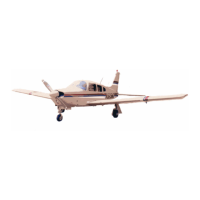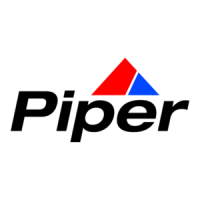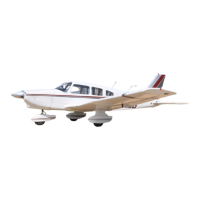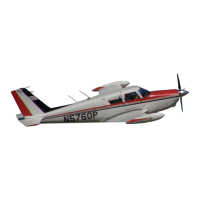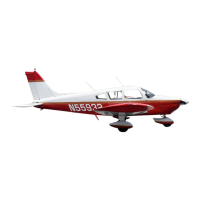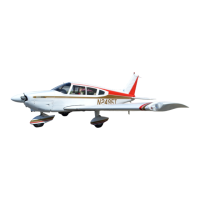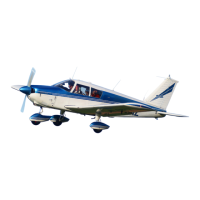LANCE II SERVICE MANUAL
With the system
pressurized to service
pressure, further tests
can be made. The
rate of any leak
should
not exceed one percent of the total supply
per 24 hour period. All traces of the detector
fluid
should be
wiped off
at the conclusion
of the
examination.
14-52. MAINTENANCE.
a. Check
the cylinder to be sure
it is securely mounted.
b. Check the
cylinder for the
ICC identification
number and for the
date of the last FAA
inspection and test.
c. If cylinder is
completely empty
it must be completely
disassembled and
inspected in an
FAA or manufacturer
approved facility before
recharging.
d. Refer to FAA Manual AC 43.13-1A for more details.
14-53. REMOVAL
OF OUTLETS.
a. Make sure
control valve is in full
off position.
b. Connect
a mask or
connecter to the
valve to release
any pressure.
c. Using a suitable
spanner wrench, remove
the outlet.
d. The outlet can now
be removed from the low
pressure line.
14-54. INSTALLATION OF OUTLETS.
a. Apply
sealant (Permacel
412) to
the male end
of the fitting.
b. Install
the outlet to the
regulator extension
with a suitable
spanner wrench.
c. Torque
the fittings into the outlets
approximately
30 inch-pounds.
Do not over torque
as
this
could damage
the outlet.
14-55. PURGING OXYGEN SYSTEM. The system should be purged whenever the cylinder
pressure
falls below 50 PSI or
if any lines are left open
for any length of time.
Also, if the bottle is
left
at below
200 PSI
it may develop
odors from bacterial
growth.
This will make
it necessary
to purge
the system. Use the following procedures:
CAUTION
When performing
this operation make
sure the area is a No Smok-
ing Area, and
is as clean as possible
of oil and dirt.
a. Keep all doors and windows open.
b. Connect
the oxygen
recharging
unit to
the filler valve.
c.
Plug the oxygen
masks into
the outlet valves
and turn on the
system.
d.
Set the recharging
unit pressure
regulator
to deliver
50 psi and
let the system
purge for
one hour. If
any odor is still
present repeat
the procedure
for one or more
hours. If
the ordor persists
after the second
purging,
send the
unit to its
manufacturer,
or an approved
shop.
14-56. CLEANING
OF FACE
MASKS. The disposable
masks are designed
for one-time use
and
require
no maintenance.
The
pilot's and
co-pilot's masks
can be
cleaned as
follows:
a. Remove the microphone from the mask.
b. Remove
the
sponge rubber
discs
from the
mask turrets.
Do
not use soap
to clean
sponge
rubber discs,
as this would
deteriorate
the rubber and
give off unpleasant
odors.
Clean in clean
water
and squeeze
dry.
c. Wash
the rest of the
mask with a very
mild solution
of soap and water.
d. Rinse
the mask
thoroughly
to remove all
traces of soap.
e. Make
sure the
sides of
the breathing
bag do
not stick
together
while drying,
as this
may
decrease
the life
of the rubber
in the
bag. The
mask can
be sterilized
with a solution
of
70 percent
ethyl
alcohol.
Added: 6/15/79 ACCESSORIES AND UTILITIES
2L14

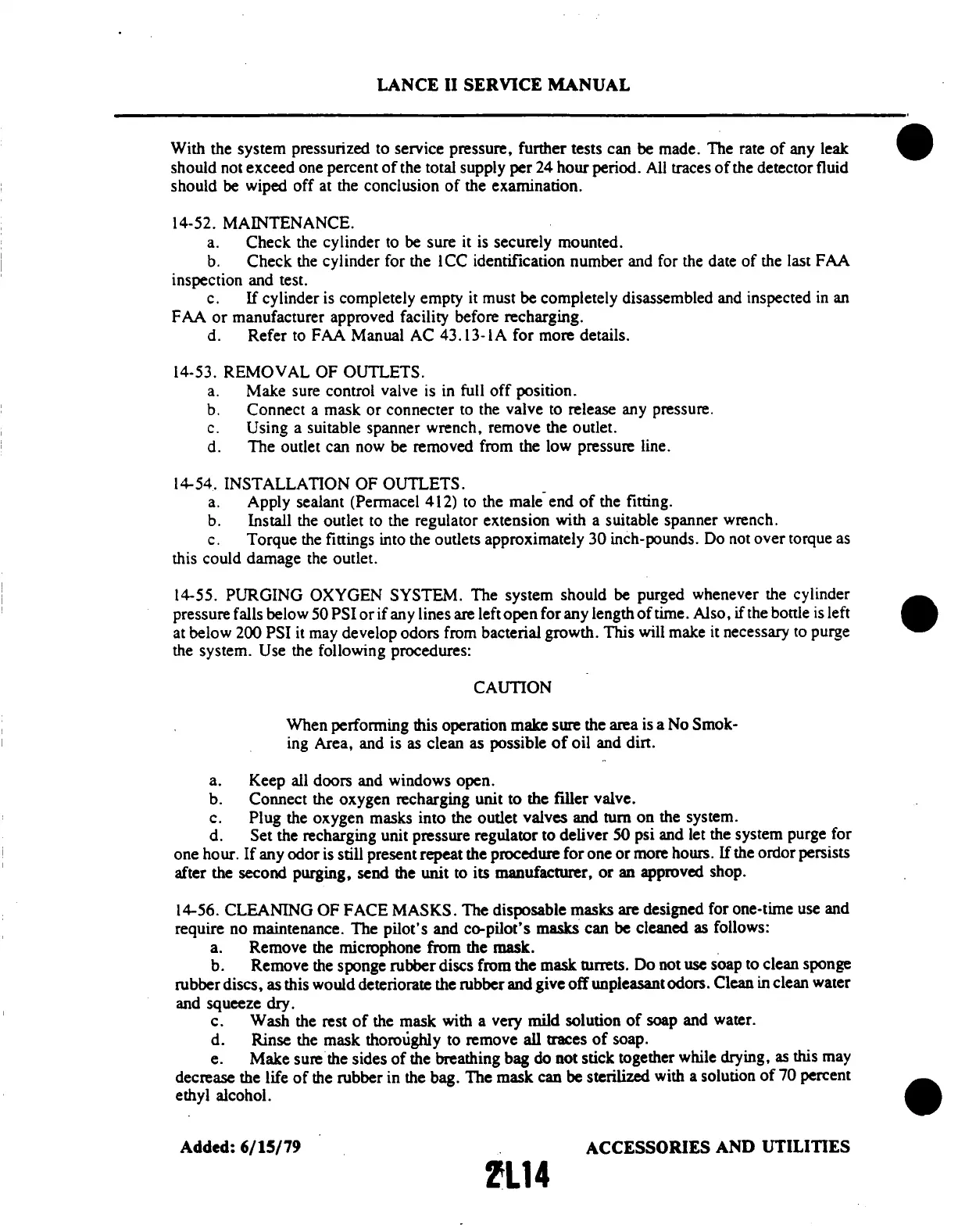